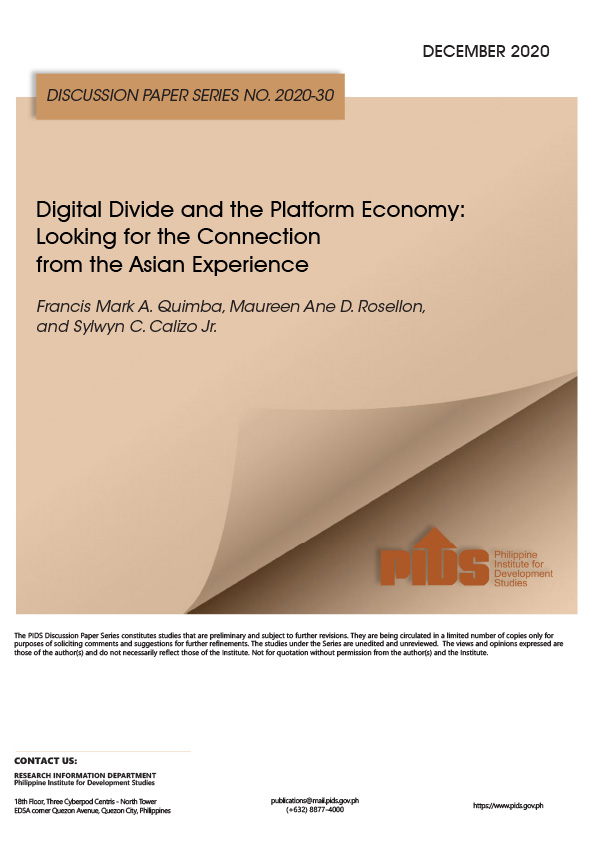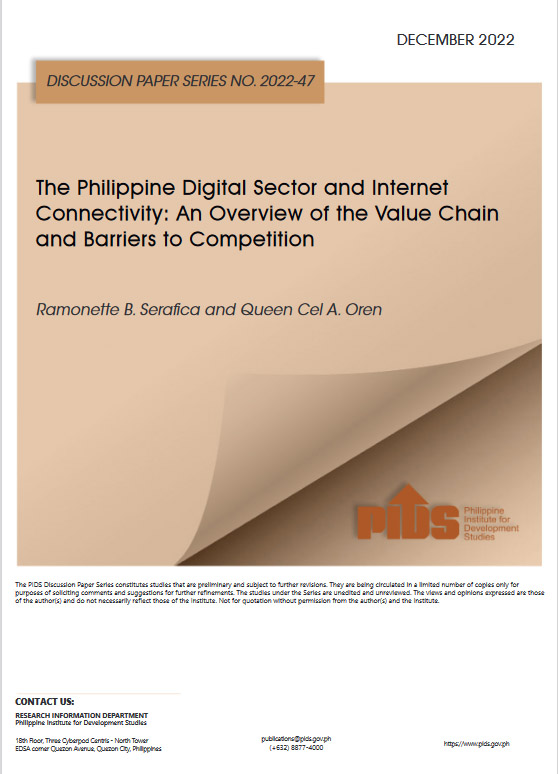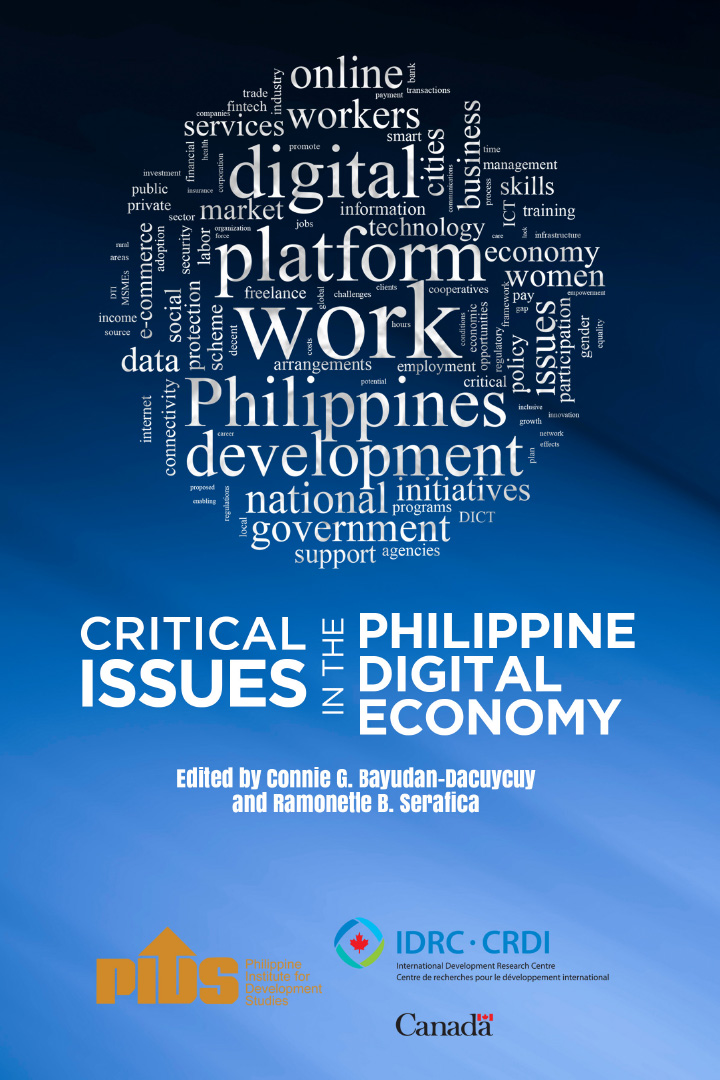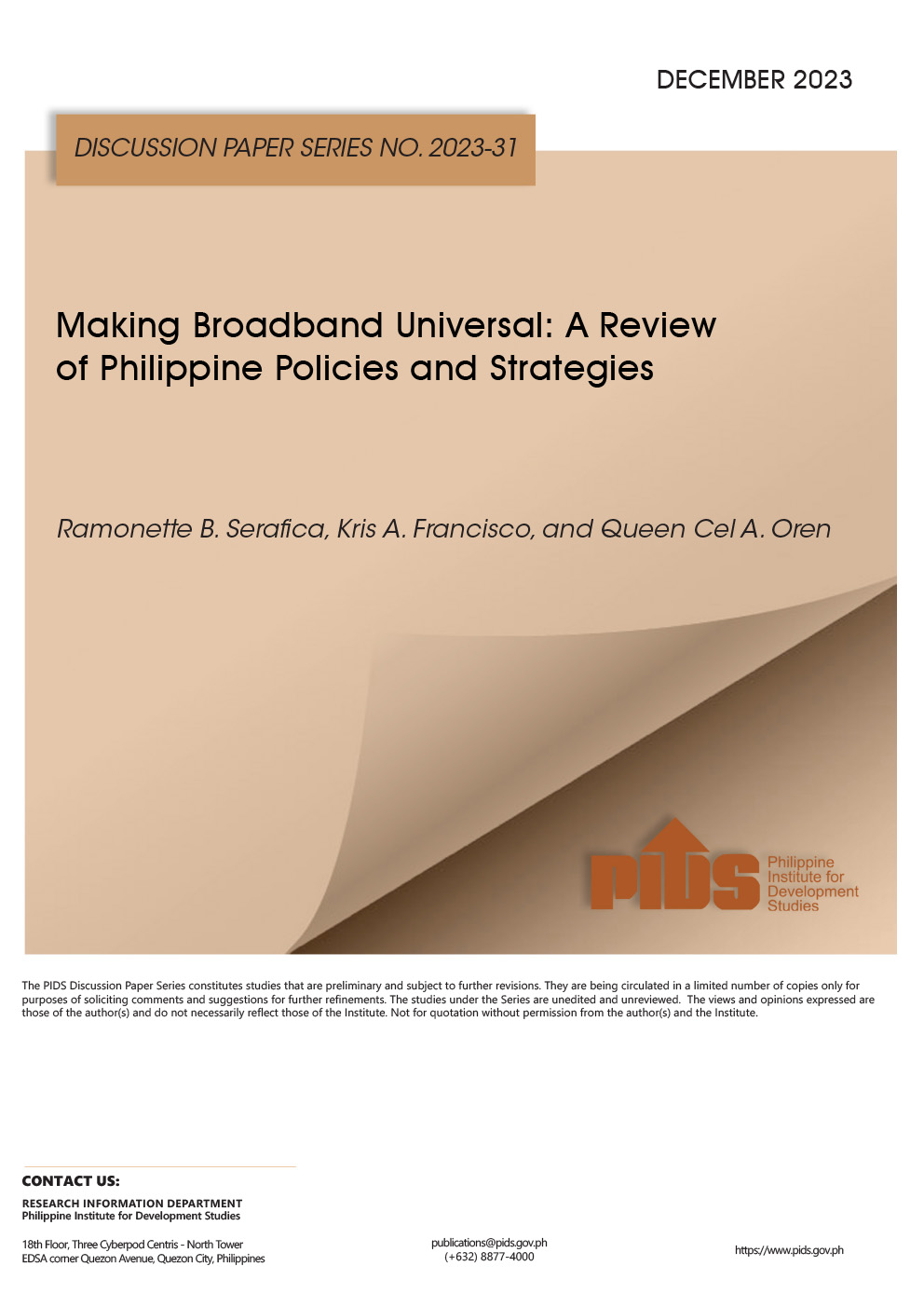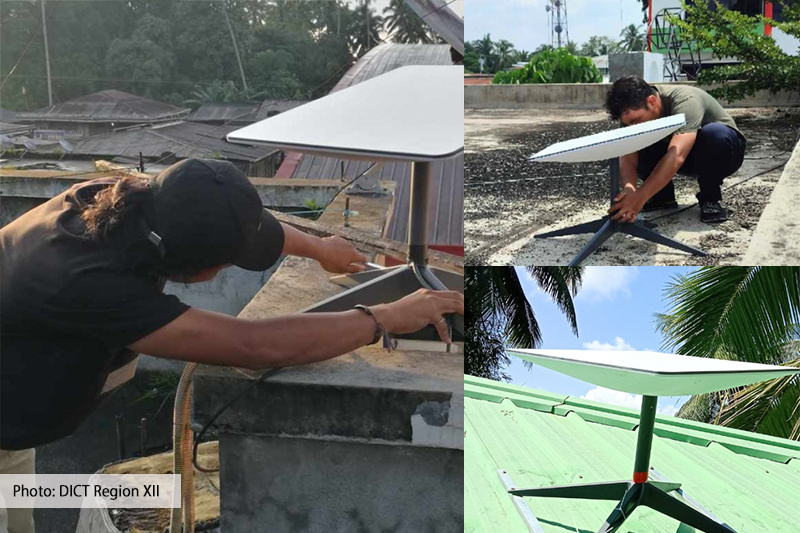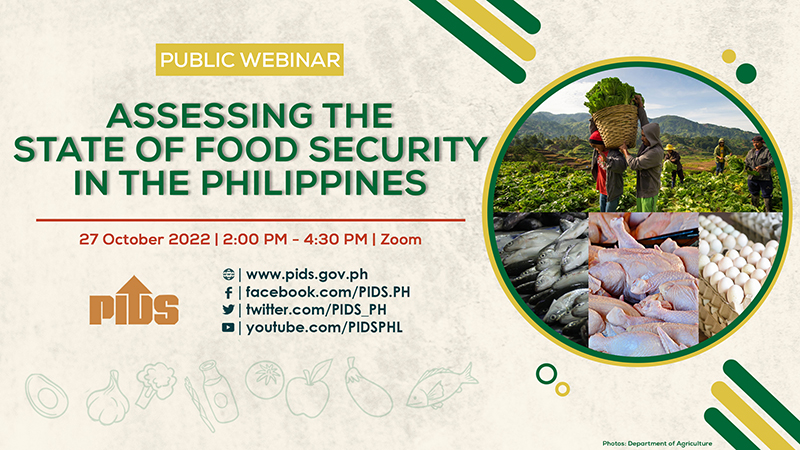This study presents the indications of the presence of a digital divide in Asia through indicators for the region and selected Asian countries. The digital divide can be seen as a determinant for the use of digital platforms as material access and skills access affect how these platforms will be used and maximized. Data from a number of countries in Asia show that certain segments of the population have better access (motivational, material, skill, and usage) to computers and the internet. These would include those who live in the urban or more affluent areas, those who are neither too old nor too young to utilize the technology, those who are male, those who are more skilled/educated, and those who have high levels of trust. van Dijk’s model posits that these groups would also be more likely participate in - and benefit from - the platform economy. As noted by van Dijk’s model, the digital platforms will face their own divide, which has already started to manifest in certain platforms. The case of accommodation platforms show that the more commercialized and touristy areas will benefit the most. This will place a wider gap between commercial and touristy areas and its periphery. Other platforms also face trust issues and security issues. Capital platforms will tend to increase the income inequality among individuals as documented by the study of JP Morgan. Meanwhile, those who have assets would tend to earn more from digital platforms. To address the inequality that may be caused by the digital platforms, policy interventions should address not only the provision of material access but also addressing the other forms of divide.
Comments to this paper are welcome within 60 days from date of posting.
Email publications@mail.pids.gov.ph.
Citations
This publication has been cited 6 times
- Anna Leah E. Gonzales . 2021. ‘Urban Asians to benefit more from digital economy’. Manila Times.
- Dindeth Ditablan . 2020. PIDS-ADB study identifies those who will benefit from digital economy. Current PH.
- Julito G. Rada . 2020. Urban residents benefit more from digital economy. Manila Standard.
- Newsbytes. 2020. Who benefits from digital economy? ADB-funded study identifies groups. NewsBytes.
- Paco Pangalangan . 2021. Commentary: The prerequisites for digital competitiveness. Philippine Star.
- PIDS/PIA . 2020. PIDS-ADB study identifies those who will benefit from digital economy. Inquirer.net.

